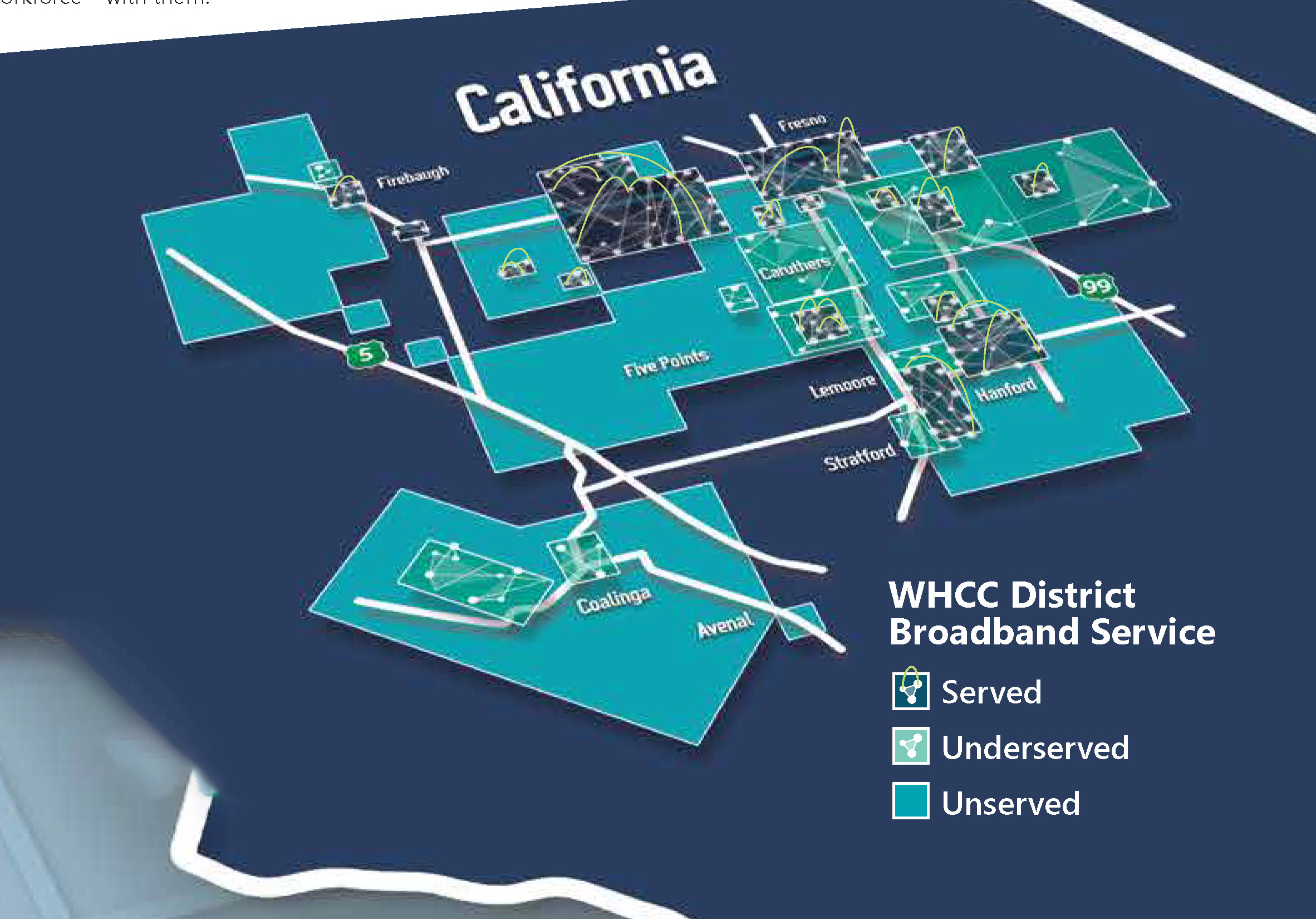Broadband is a big Central Valley issue: here is how WHCCD is attempting to solve it.
Angelic Salinas couldn’t do her homework. The 45-year old had recently returned to college, stepping into West Hills College Coalinga’s North District Center in Firebaugh as a student for the first time since 1993. And now, she couldn’t do her homework even though she was trying. The problem? Her internet connection in rural Mendota can be inconsistent. She finds herself haunting coffee shops and libraries and the North District Center in search of a wireless connection, as even in person classes rely on an online portal and, often, online materials. The lack of internet access was just one more thing the returning student had to worry about.
“It is so frustrating,” Salinas said. “It was especially hard when I first came back to school because my internet would fade in and out. My teacher would send me a video to watch and I couldn’t watch it at home. Or the internet would shut off while I was working.”
Angelic isn’t alone. Lack of access is an endemic problem on the Westside of the Central Valley according to Dr. Linda Thomas, Vice Chancellor of Educational Services and Workforce Development at West Hills Community College District.
“We have realized that there are extreme, endemic barriers to student success that exist outside the classroom in our area, including internet access,” Thomas said. “You cannot have student success without that. You can do everything you can in the classroom, but if the student leaves the classroom and there’s no broadband it doesn’t matter.”
Students aren’t the only ones affected by this issue in the Valley. According to the California Public Utilities Commission’s 2016 Annual Report, only 43 percent of California’s rural population—most of which resides in the Central Valley—has access to broadband internet. This includes Central Valley growers looking to implement the latest in agriculture technology, Westside students, those relying on telemedicine to access a doctor or facilitate medical care and Valley residents.
To combat those barriers, West Hills Community College District has launched the Rural Broadband Initiative. As part of the initiative, which grew of out of the WHCCD’s latest Essential Element Series event, WHCCD is working with companies, organizations and other interested parties toward implementing affordable broadband internet across the WHCCD’s 3,464 square miles.

“A rising tide floats all ships,” Thomas said. “We know that helping to make rural broadband a realty will increase our student demand and increase our student success rates by eliminating an extreme barrier those students now face. We know it’ll help the economy because local growers will be incentivized to implement the latest in agriculture technology. Telemedicine clinics and rural health clinics will be able to serve more people. It’s a game changer and we can already see what a big impact it’ll have.”
Part of the hope for the initiative is that it could stop the effect of what some have called “brain drain.” Agriculture students in the West Hills Community College District receive instruction in the latest advances in agriculture technology but find when they graduate that farms in the Valley aren’t using that technology due to a lack of access to broadband. They then leave the Valley and take their skills—and their contribution to the local economy and workforce—with them.
Since the initiative began during Essential Elements 6: Grow Food, Grow Jobs, Ag Tech Broadband Pilot—which aimed to start and broker the conversation around this issue regionally—Thomas and others involved with it have worked closely to form relationships with technology companies, government entities and more. WHCCD recently welcomed Kim Vann, State Director of USDA Rural Development in California, to the West Hills College Coalinga Farm of the Future and has worked closely with other government groups. Additional interest has been seen from Americorp Fellows, AT&T, VAST and Chevron.
WHCCD is also going to Sacramento in support of the project: West Hills is named in California Farm Bill AB 2166, which would require an analysis of internet accessibility in rural areas, the creation of “smart farms” focused on agriculture technology at community colleges and more.
Ultimately though, a big part of the concern around broadband comes down to the students.
“If we’re really serious about student success, we have to be involved with the outside issues that often prohibit it,” Thomas said. “We have to work on knocking down those barriers.”
Experience Essential Elements 6: Grow Food, Grow Jobs – Ag Tech Broadband Pilot. This conversation resulted in the Rural Broadband Initiative